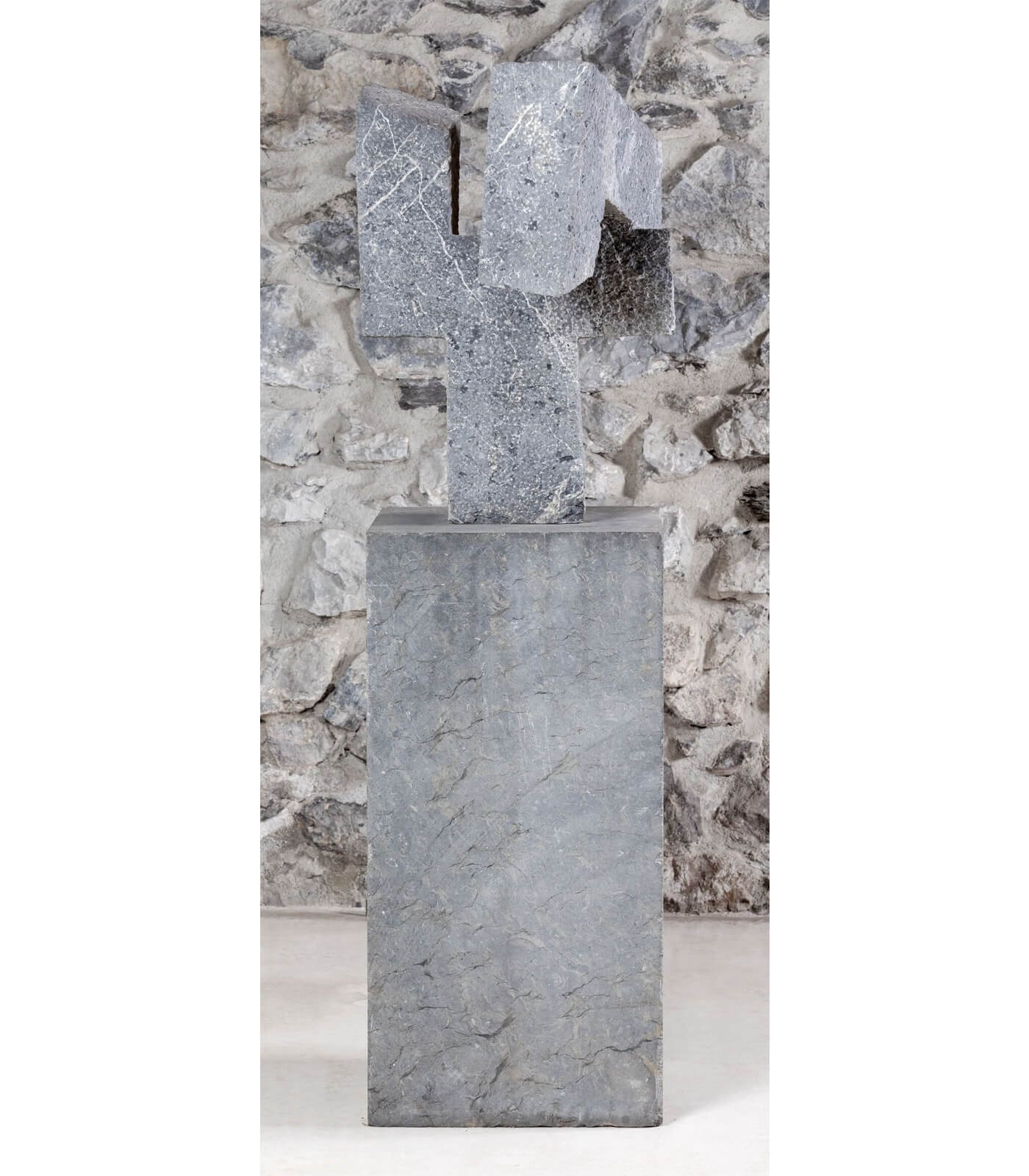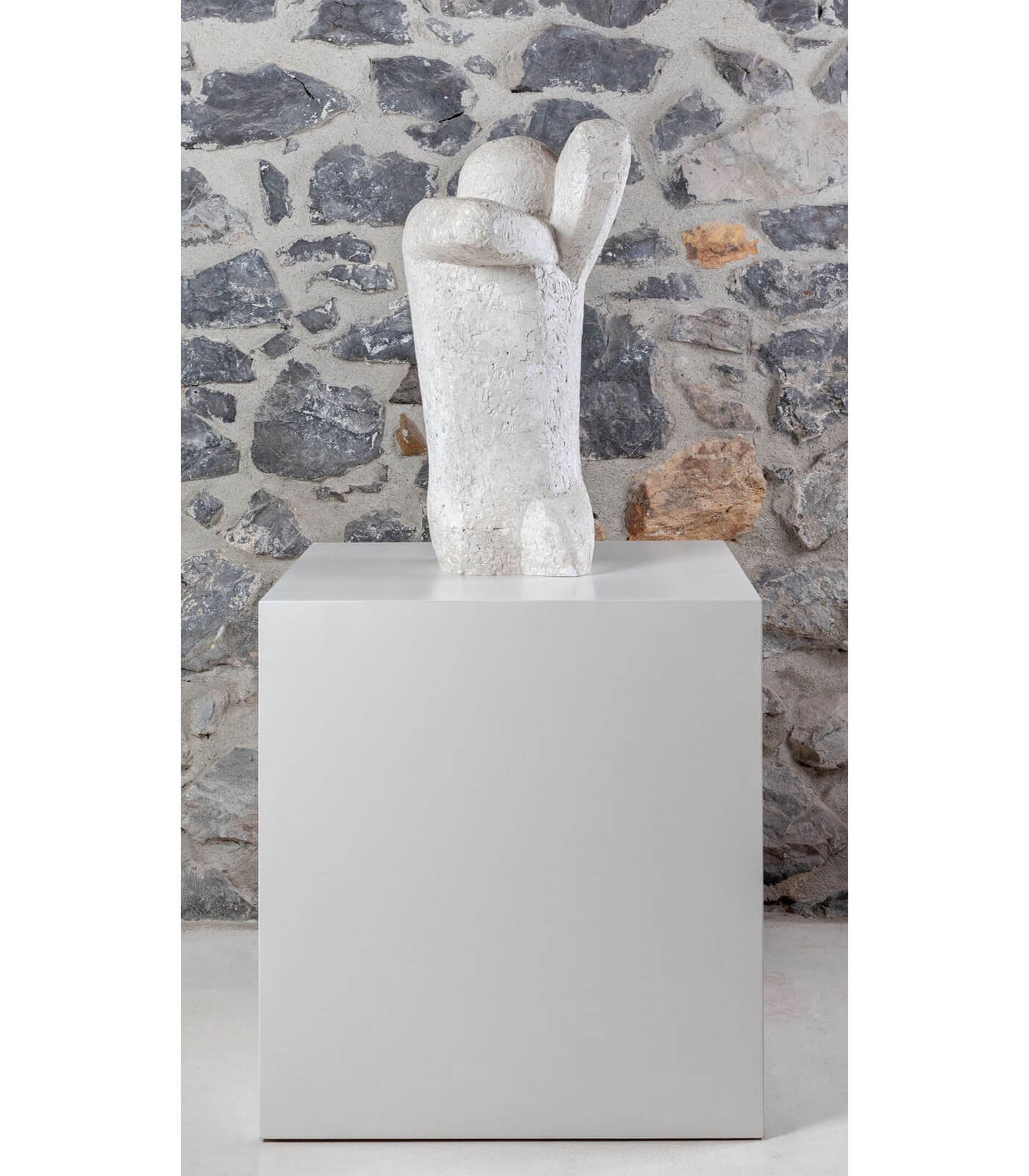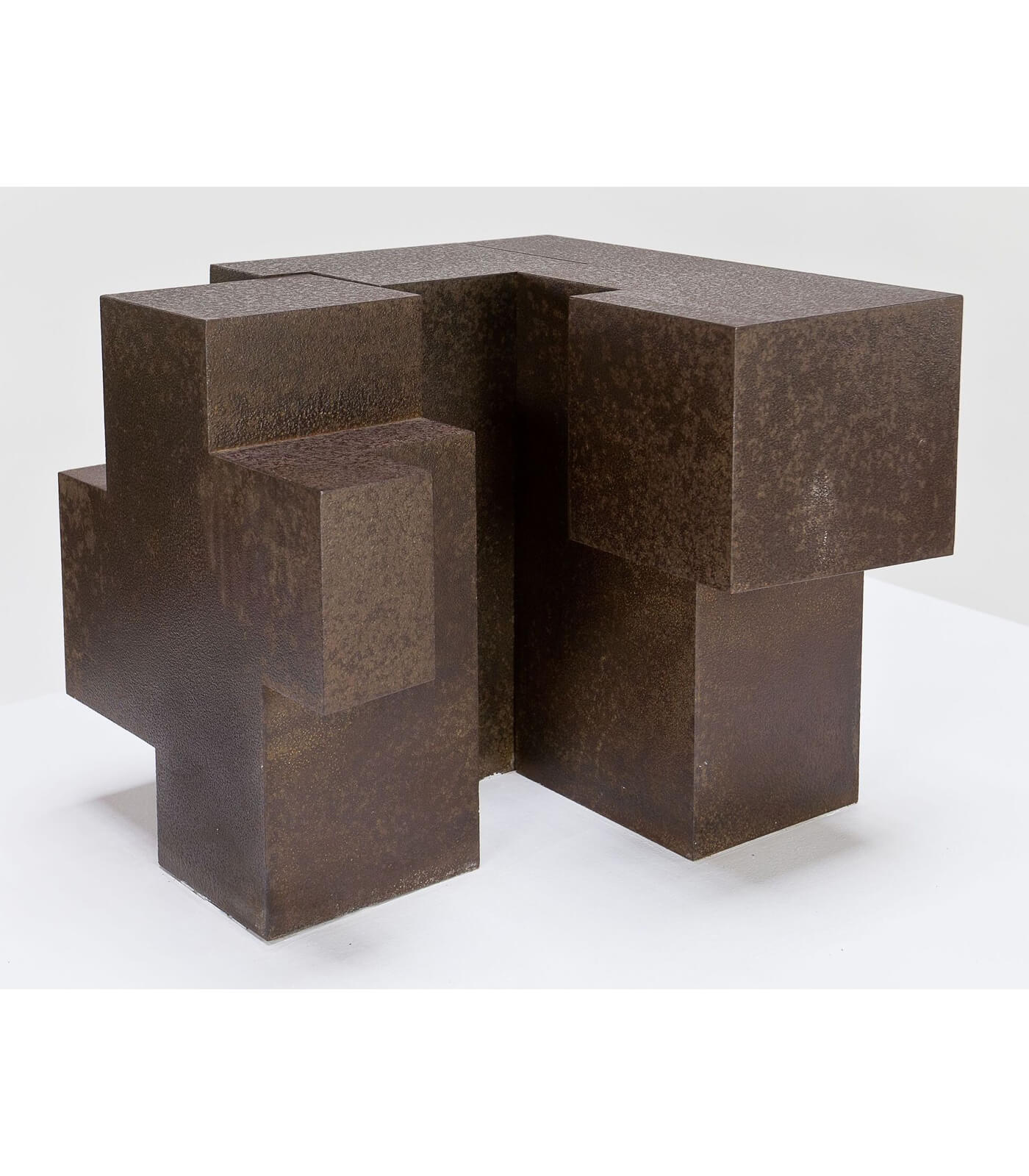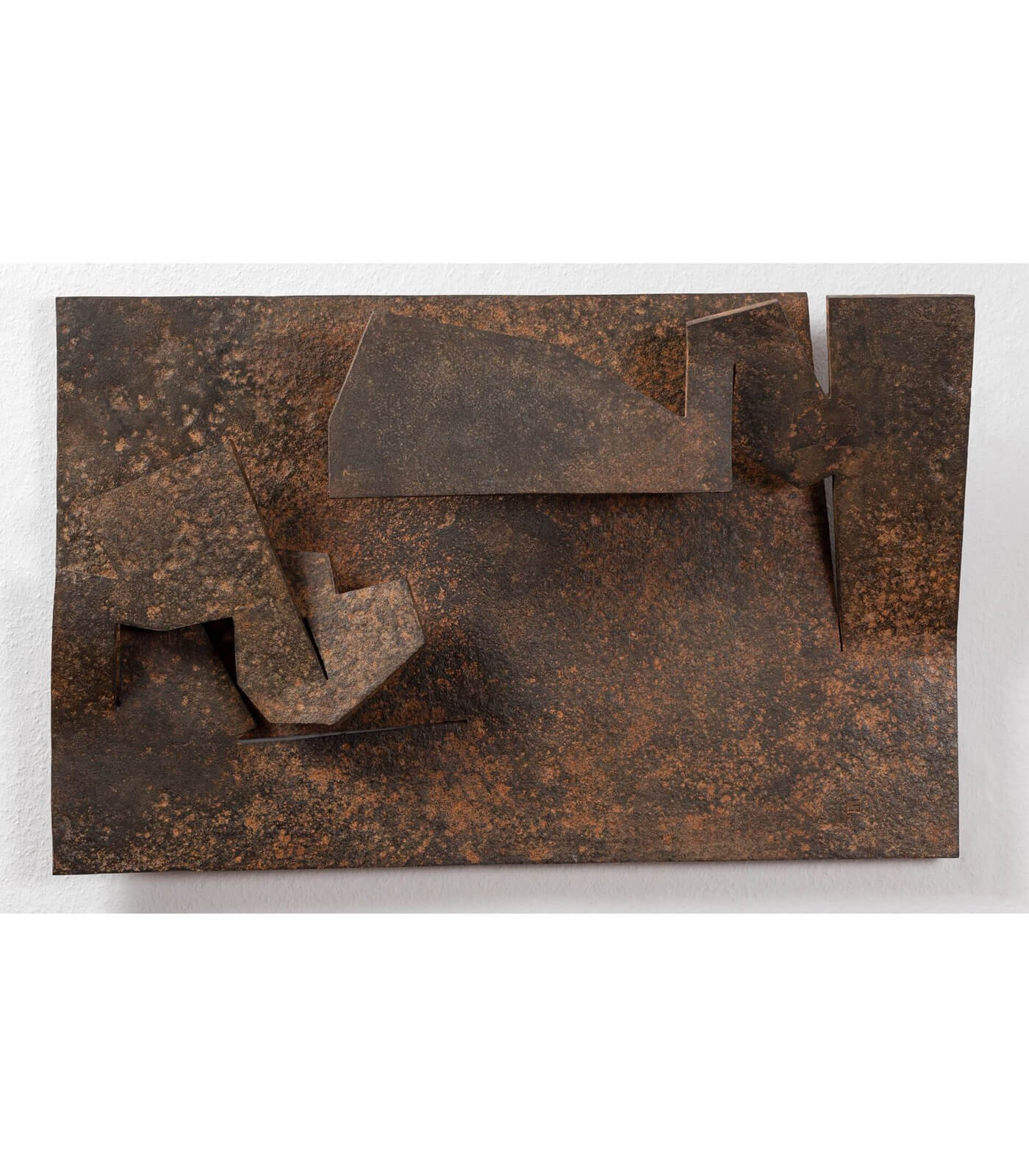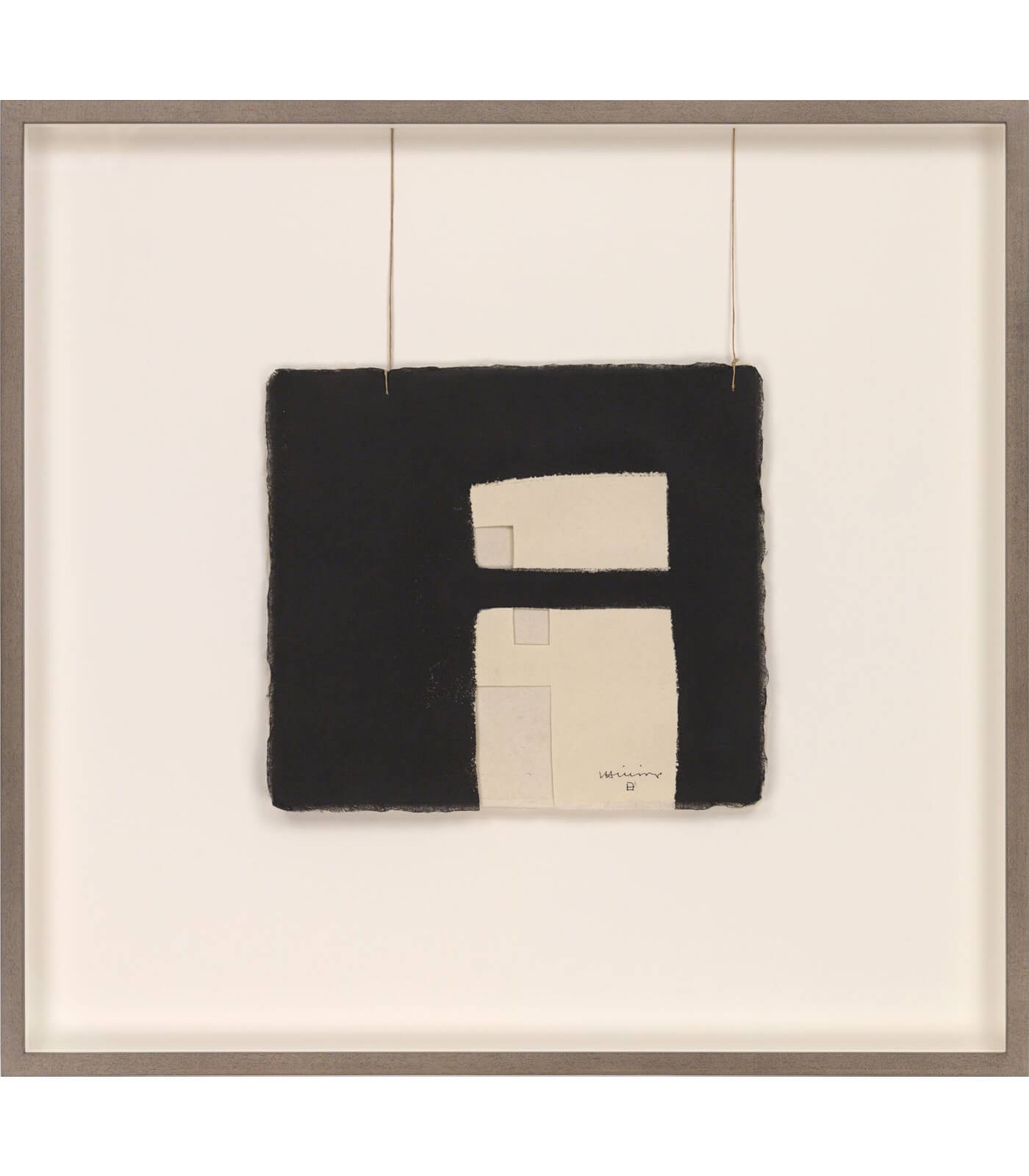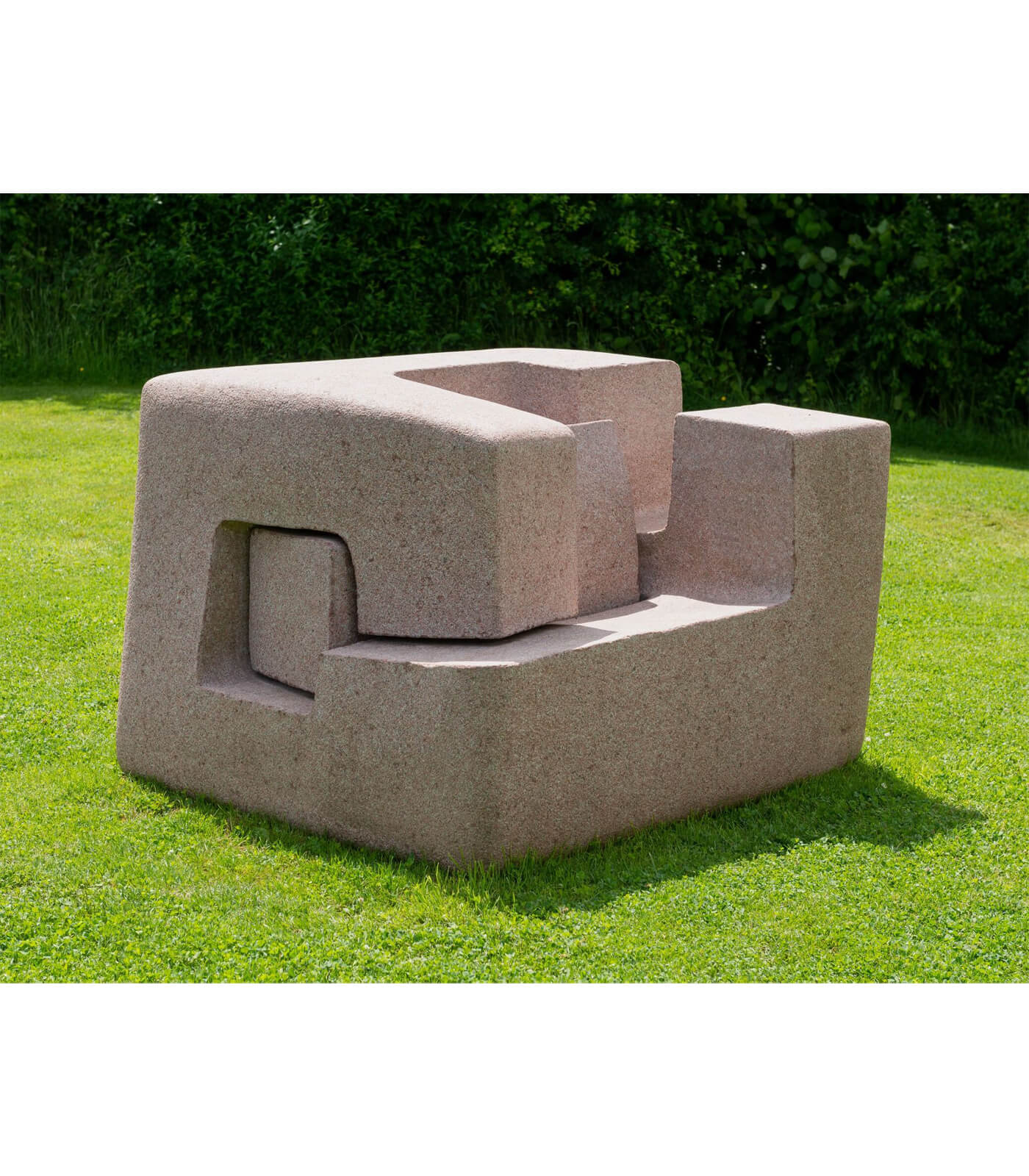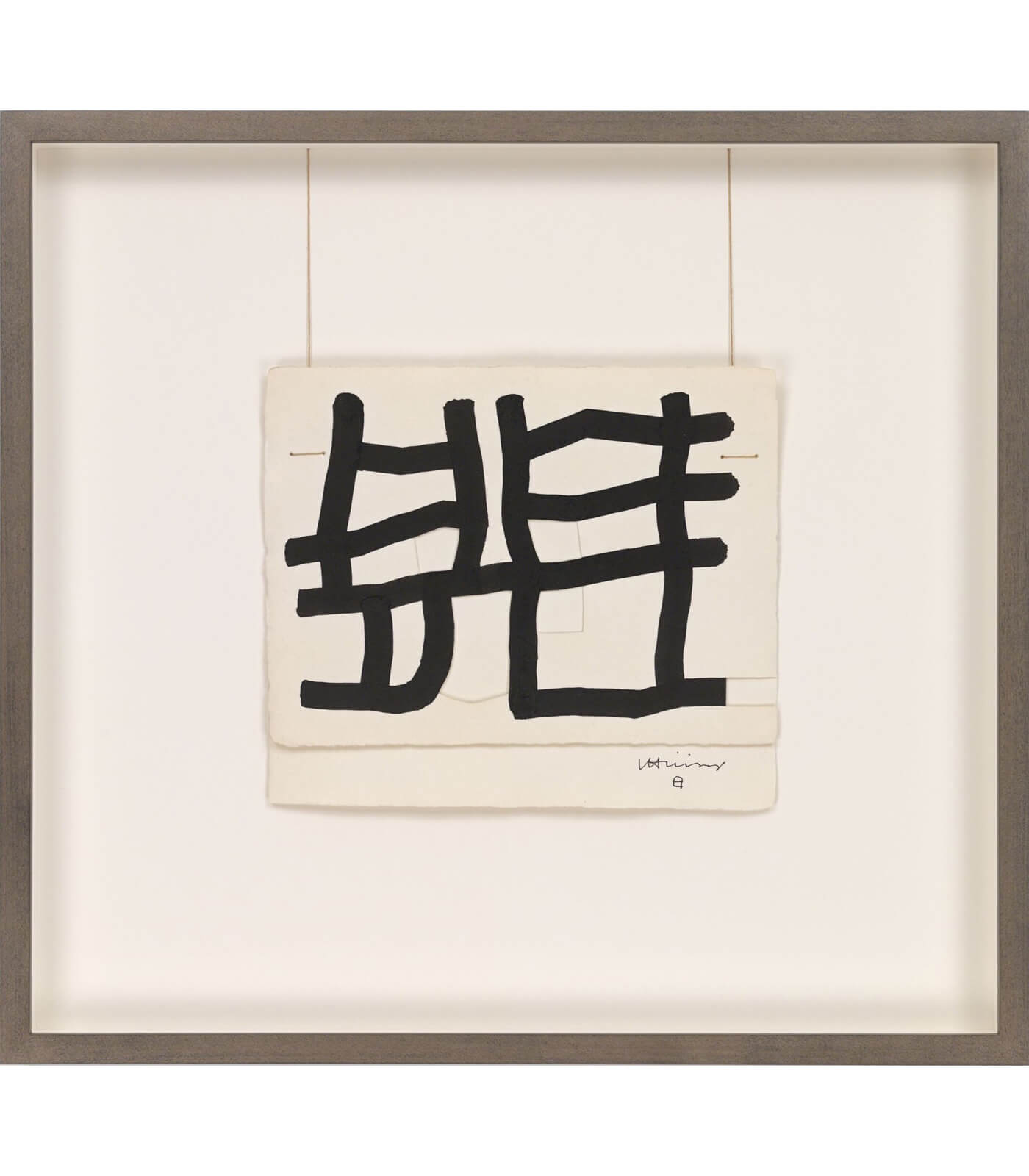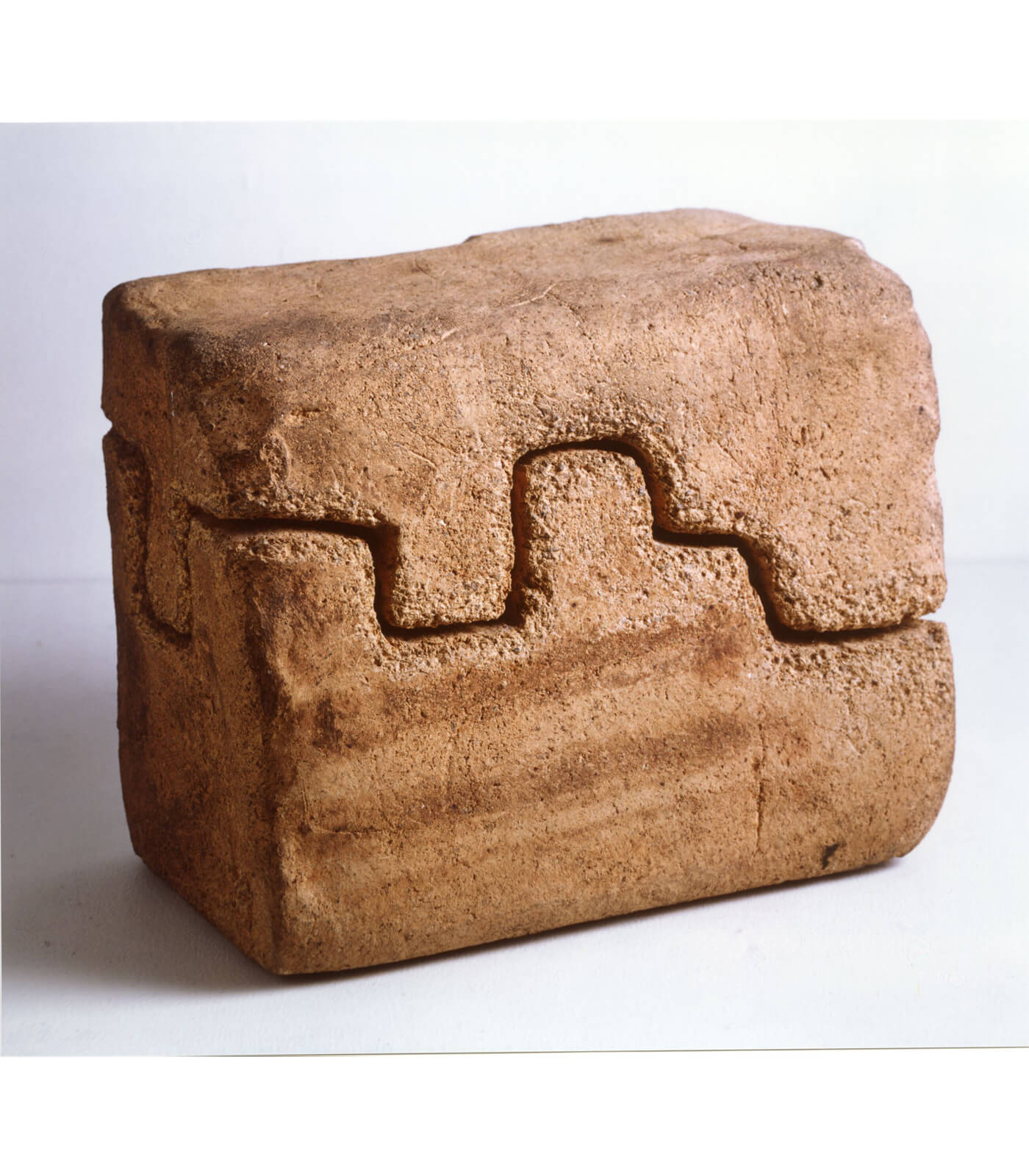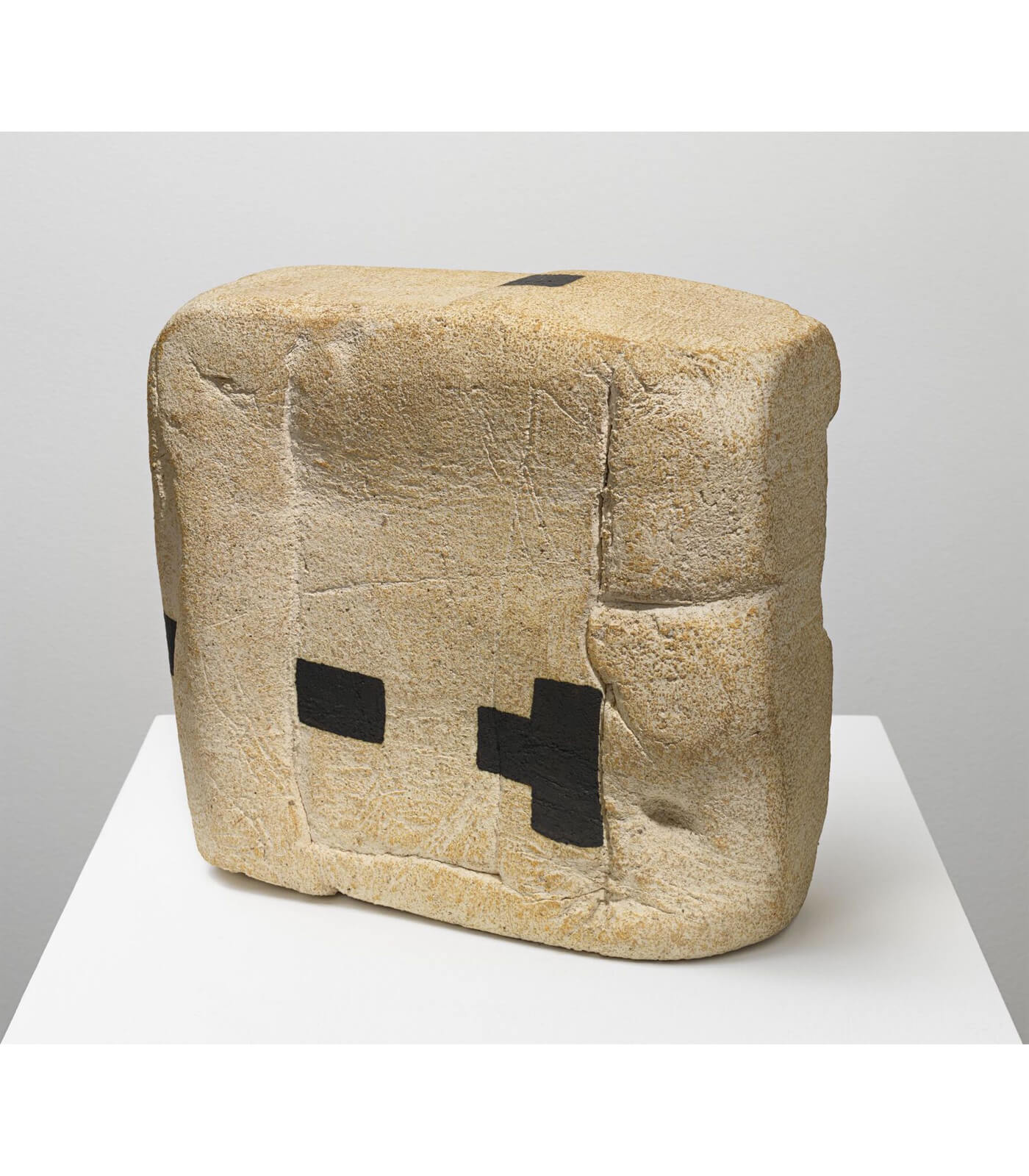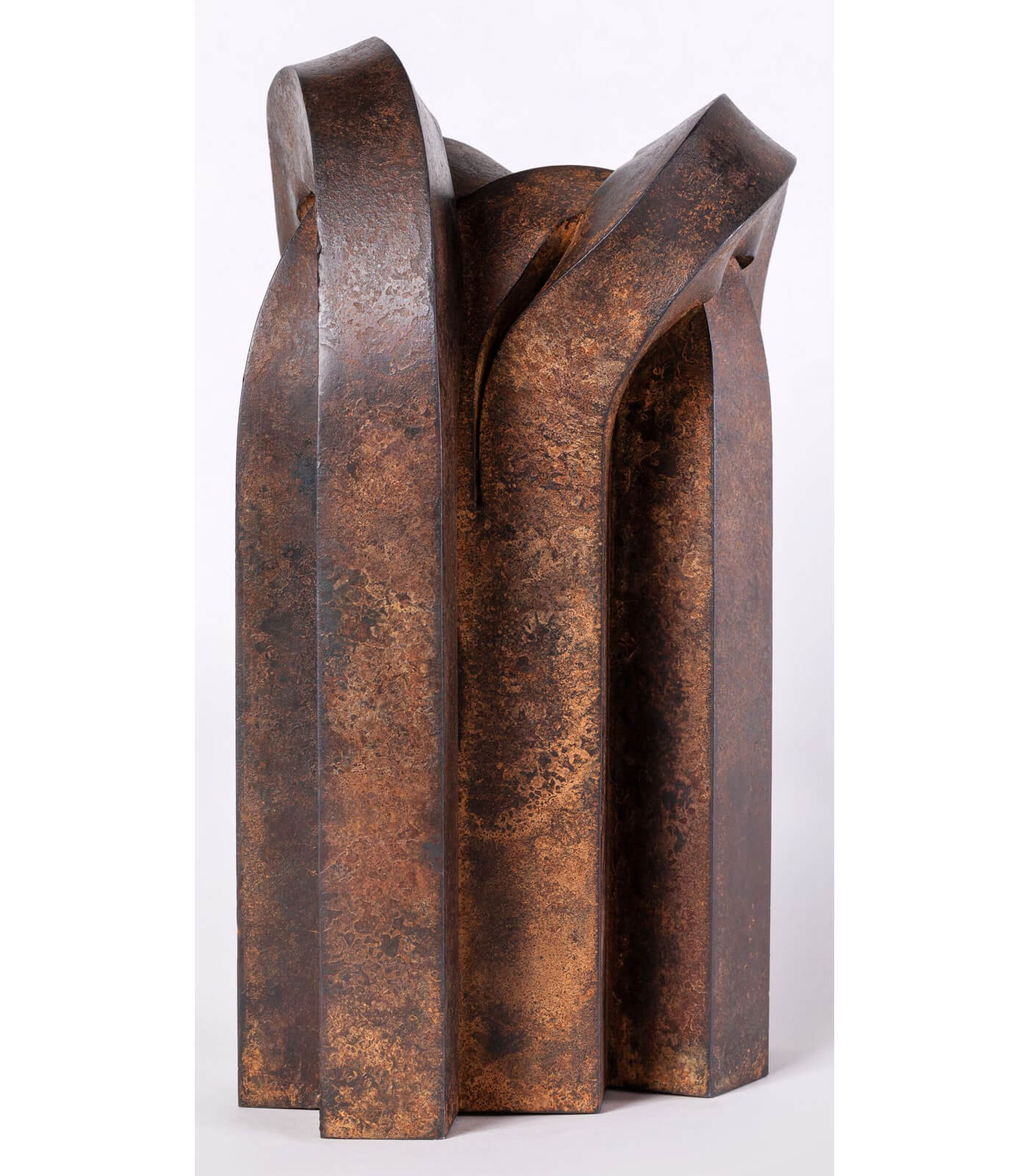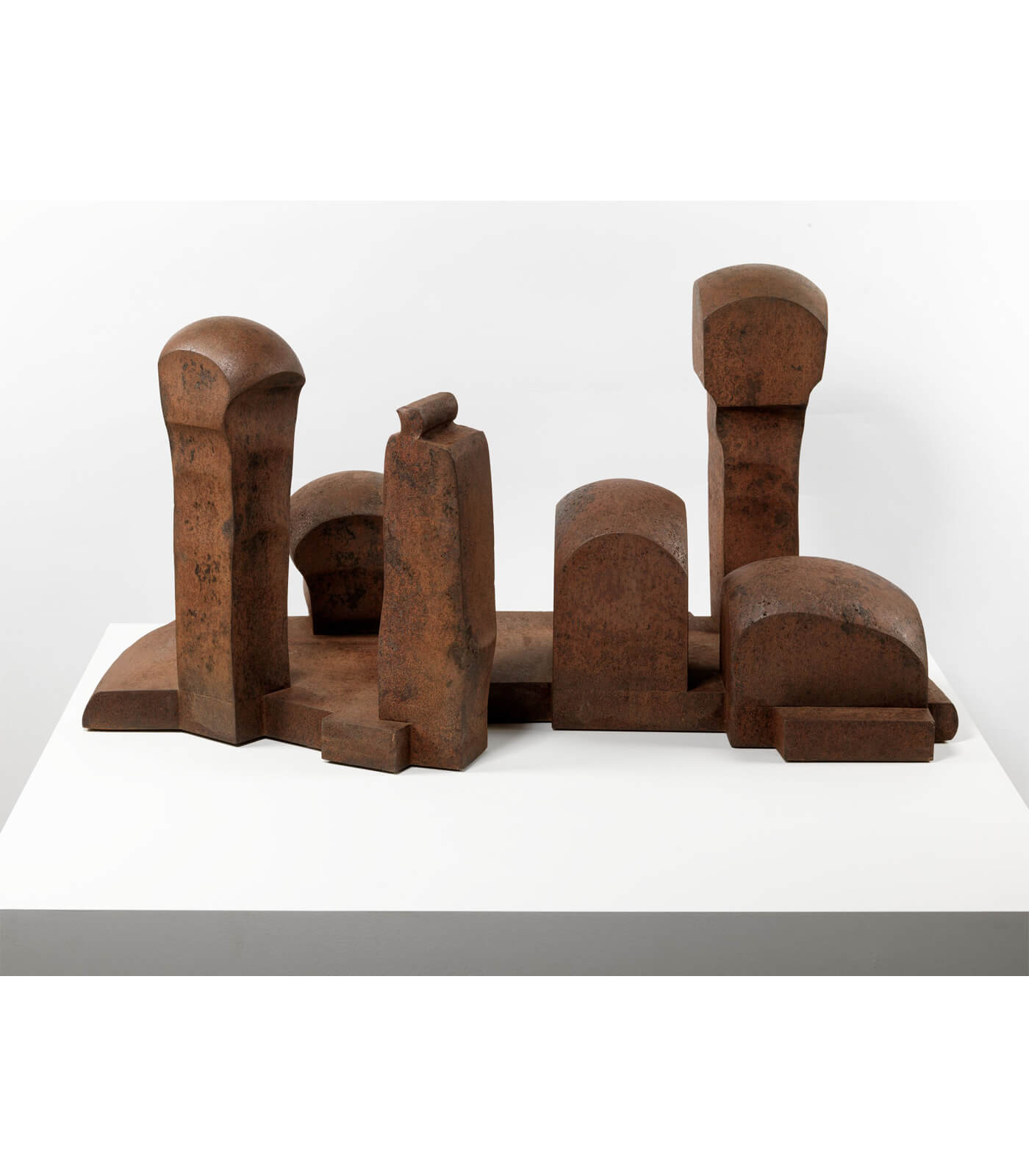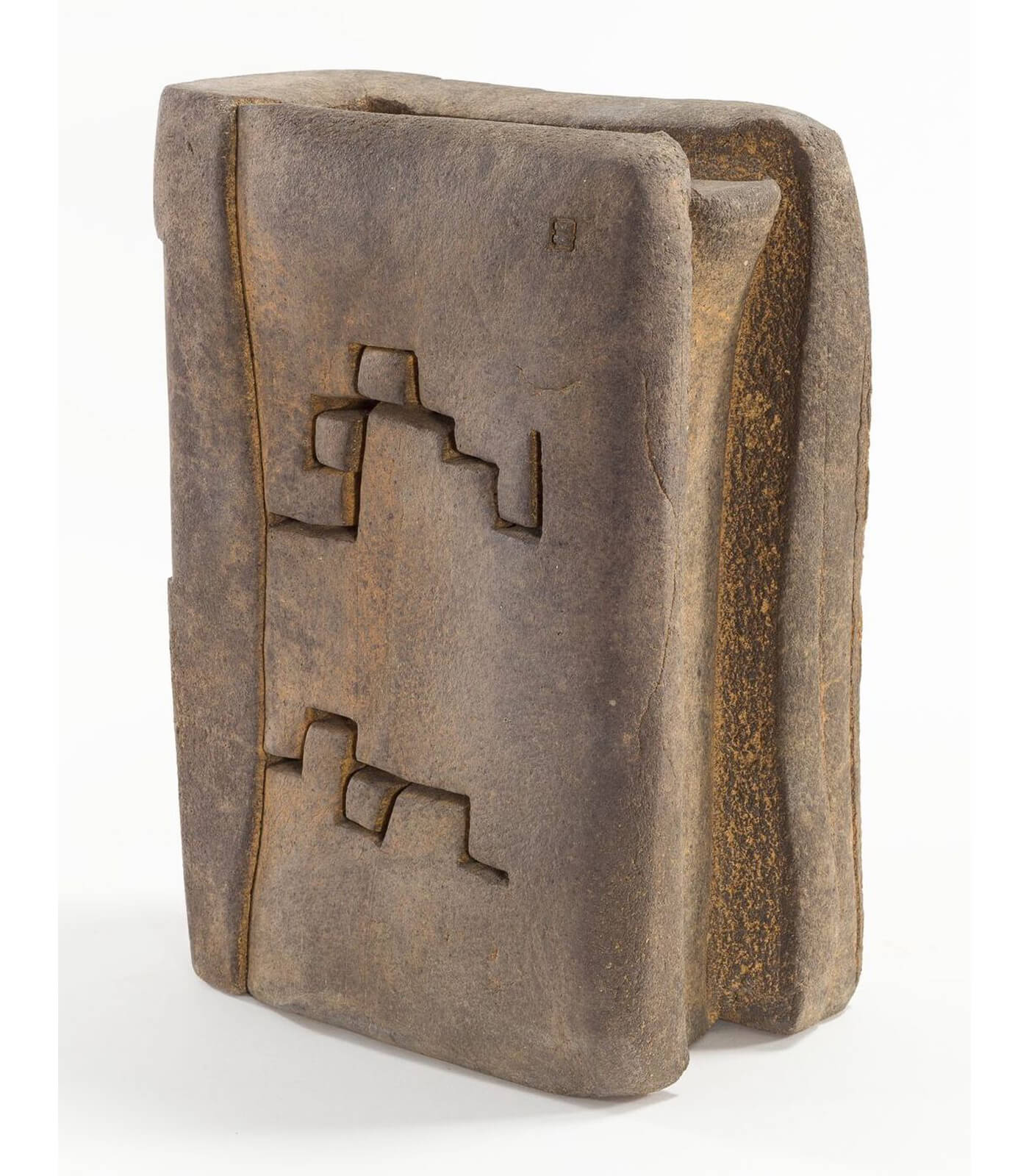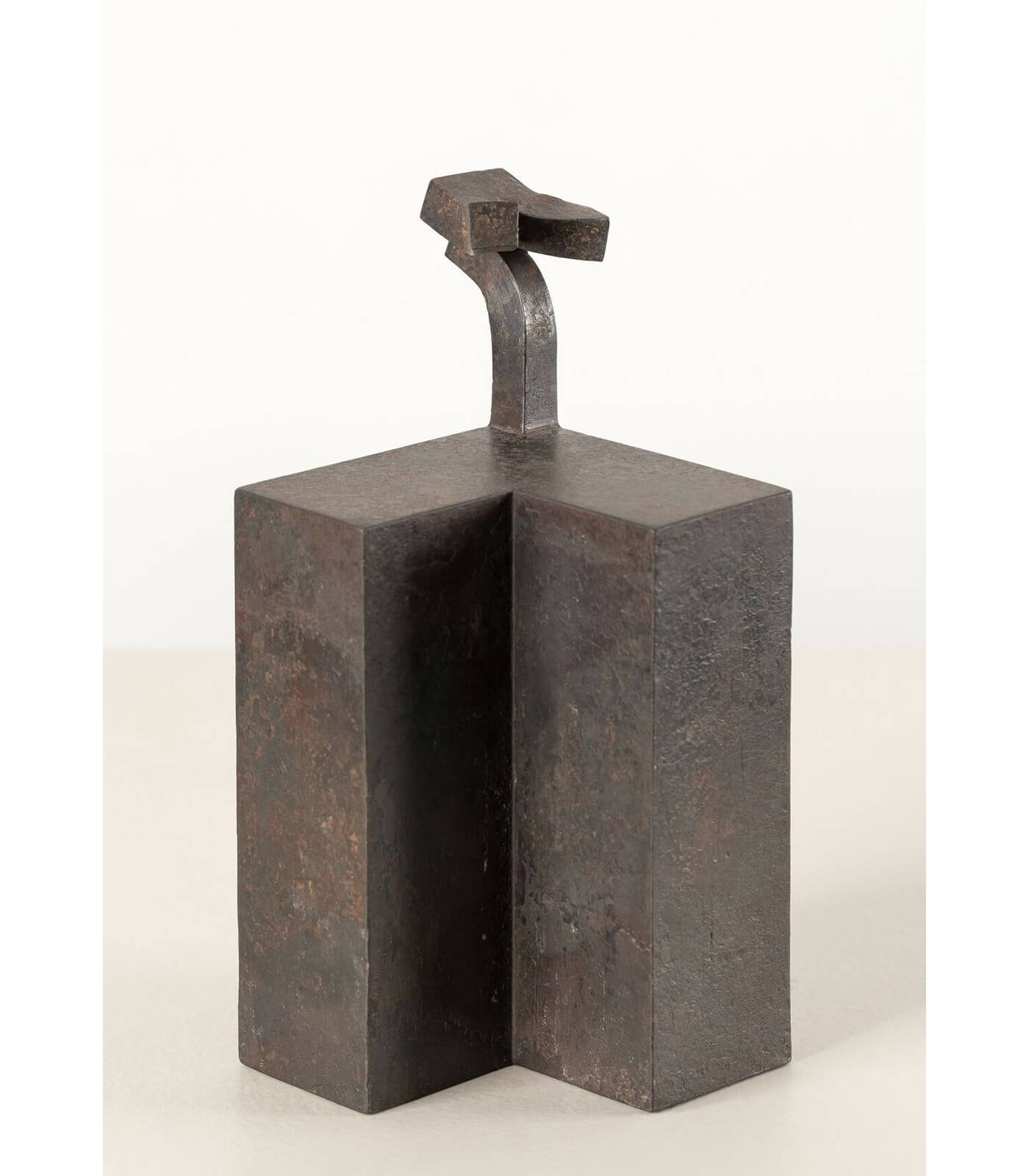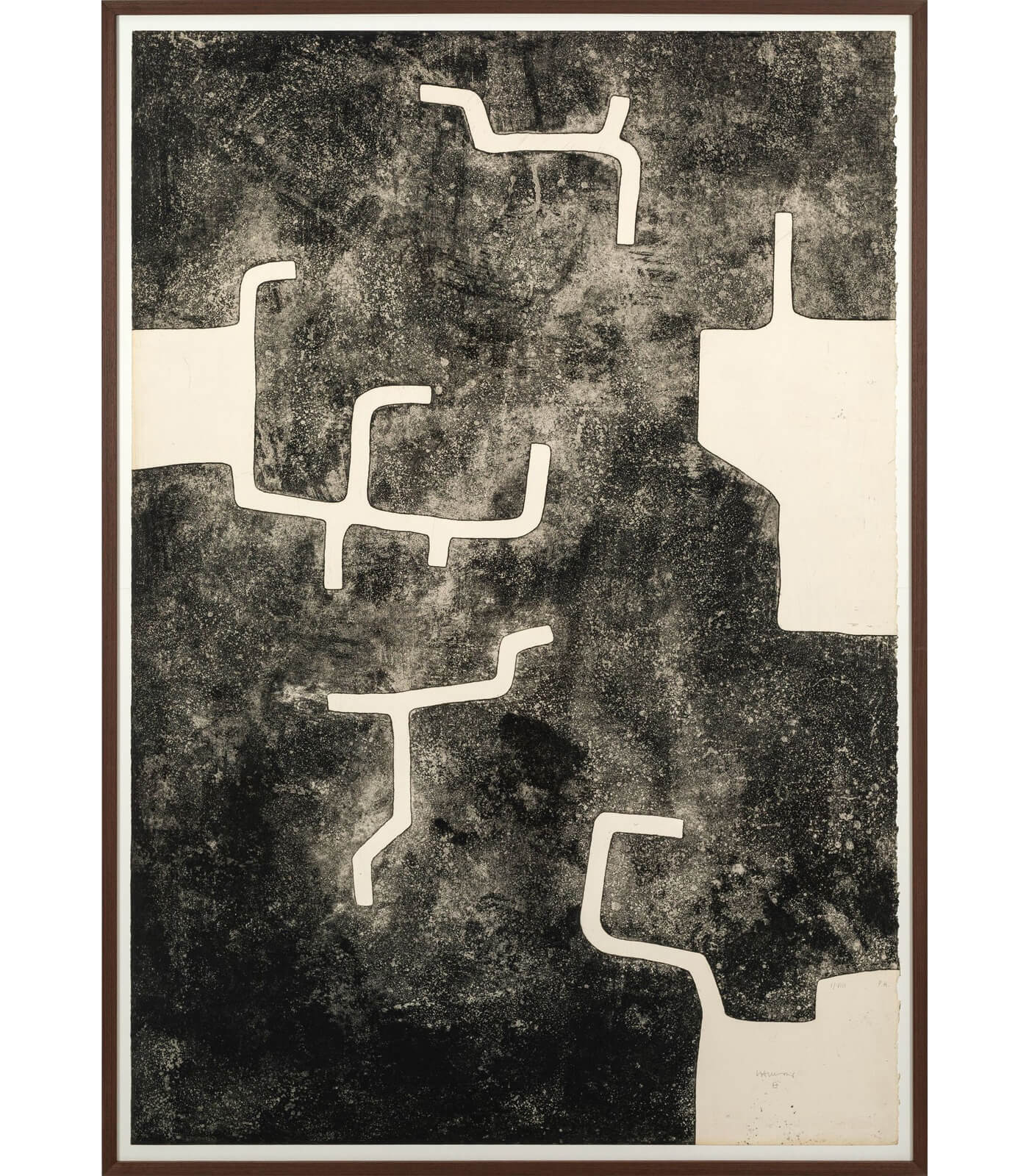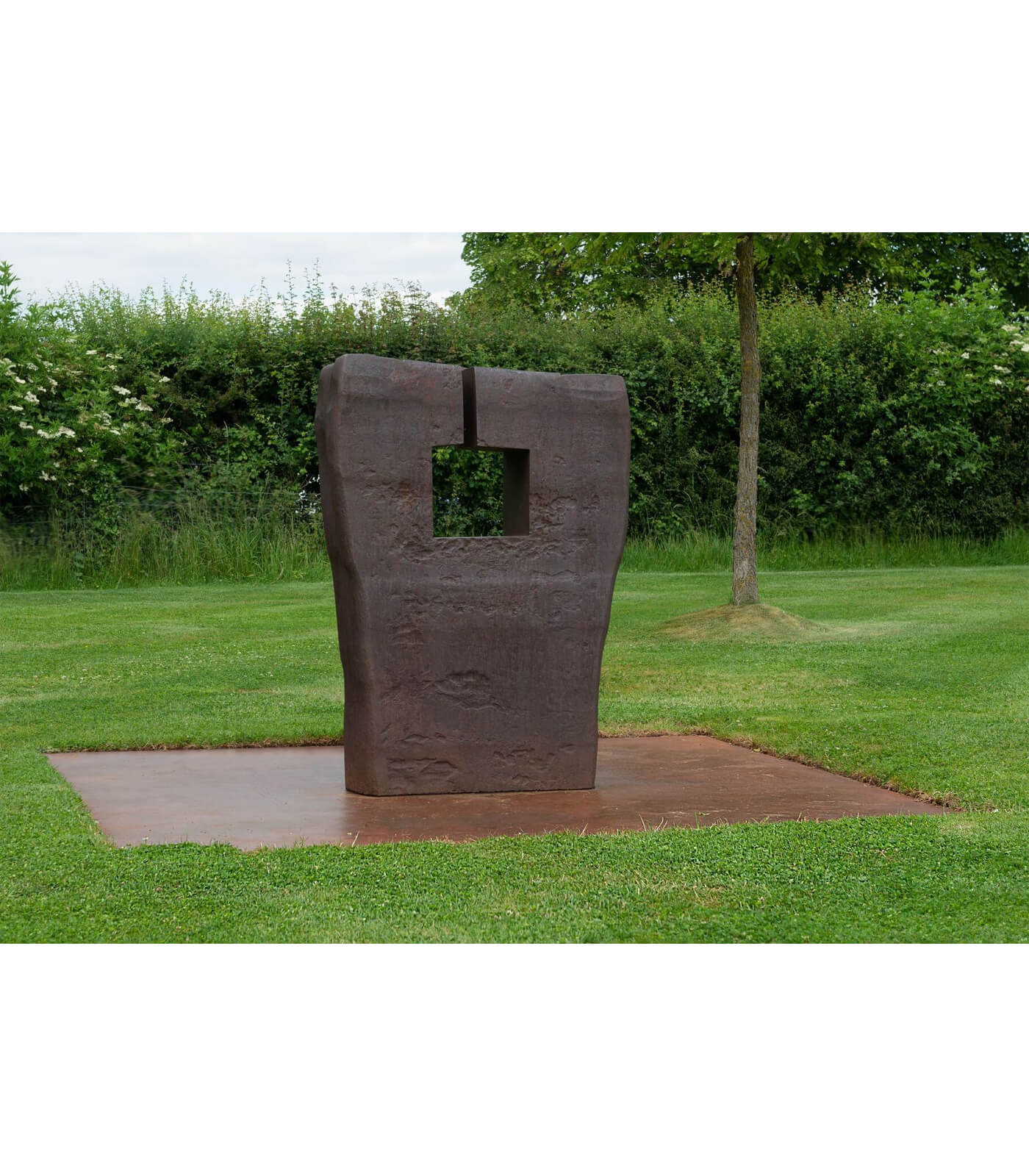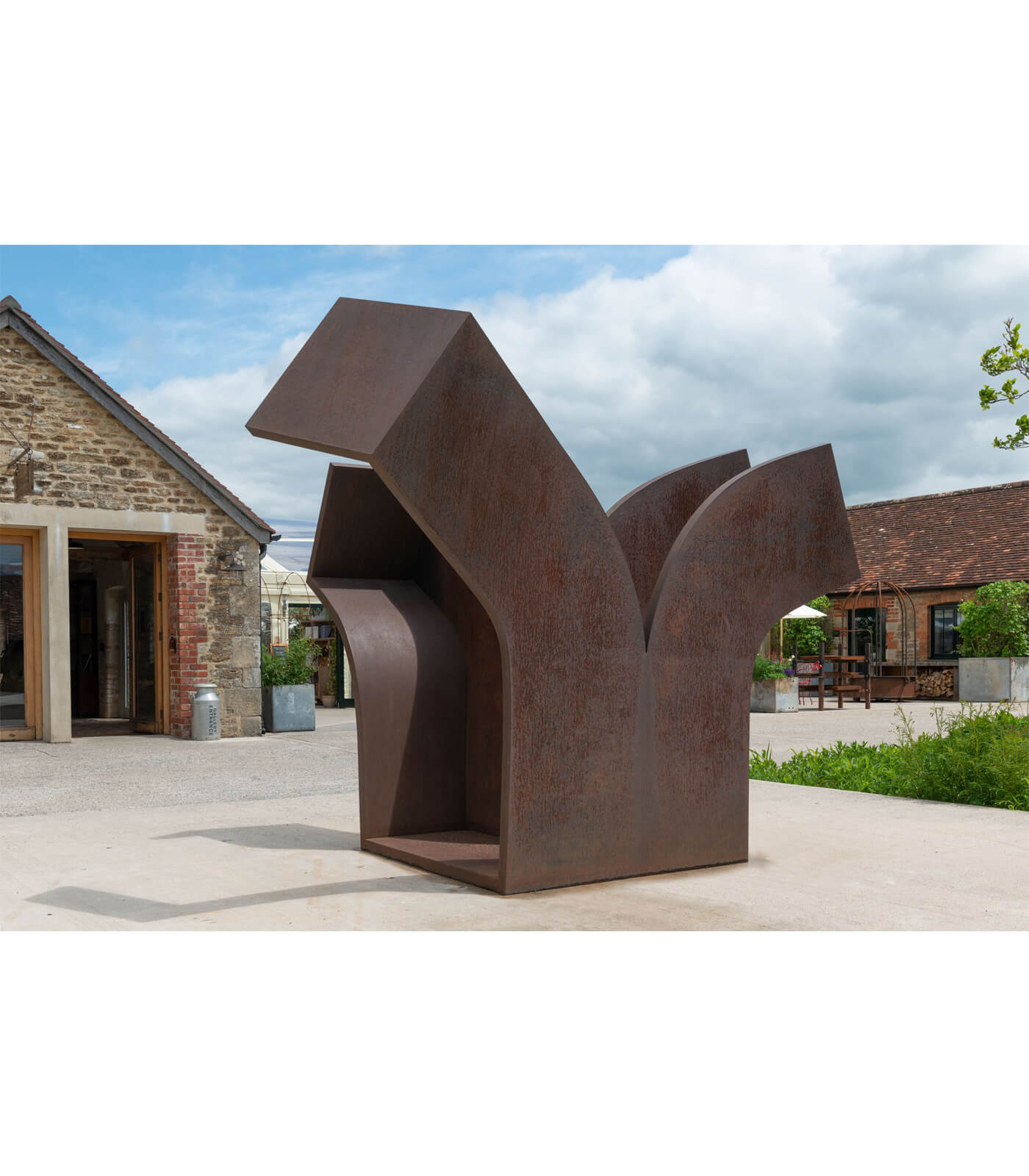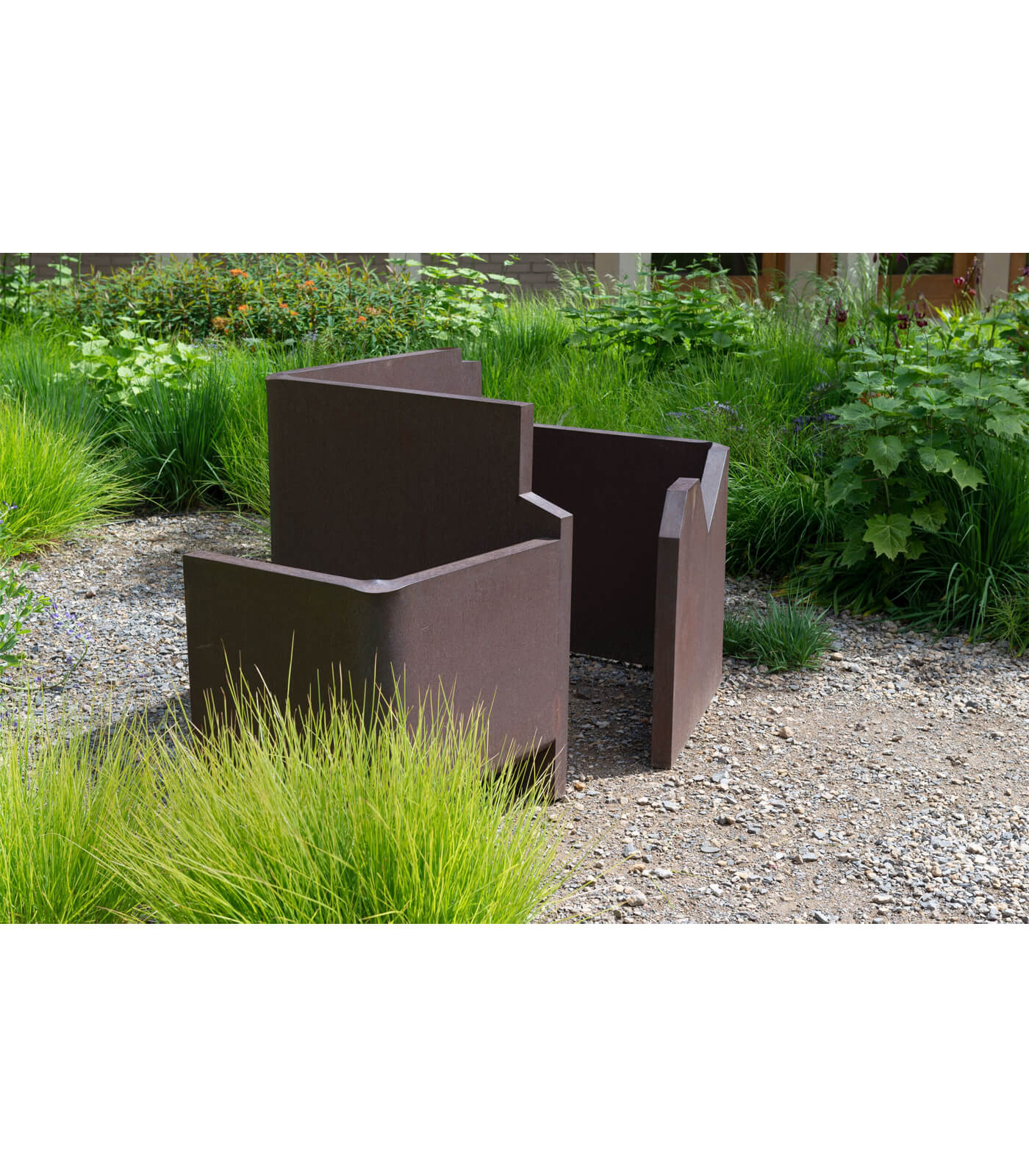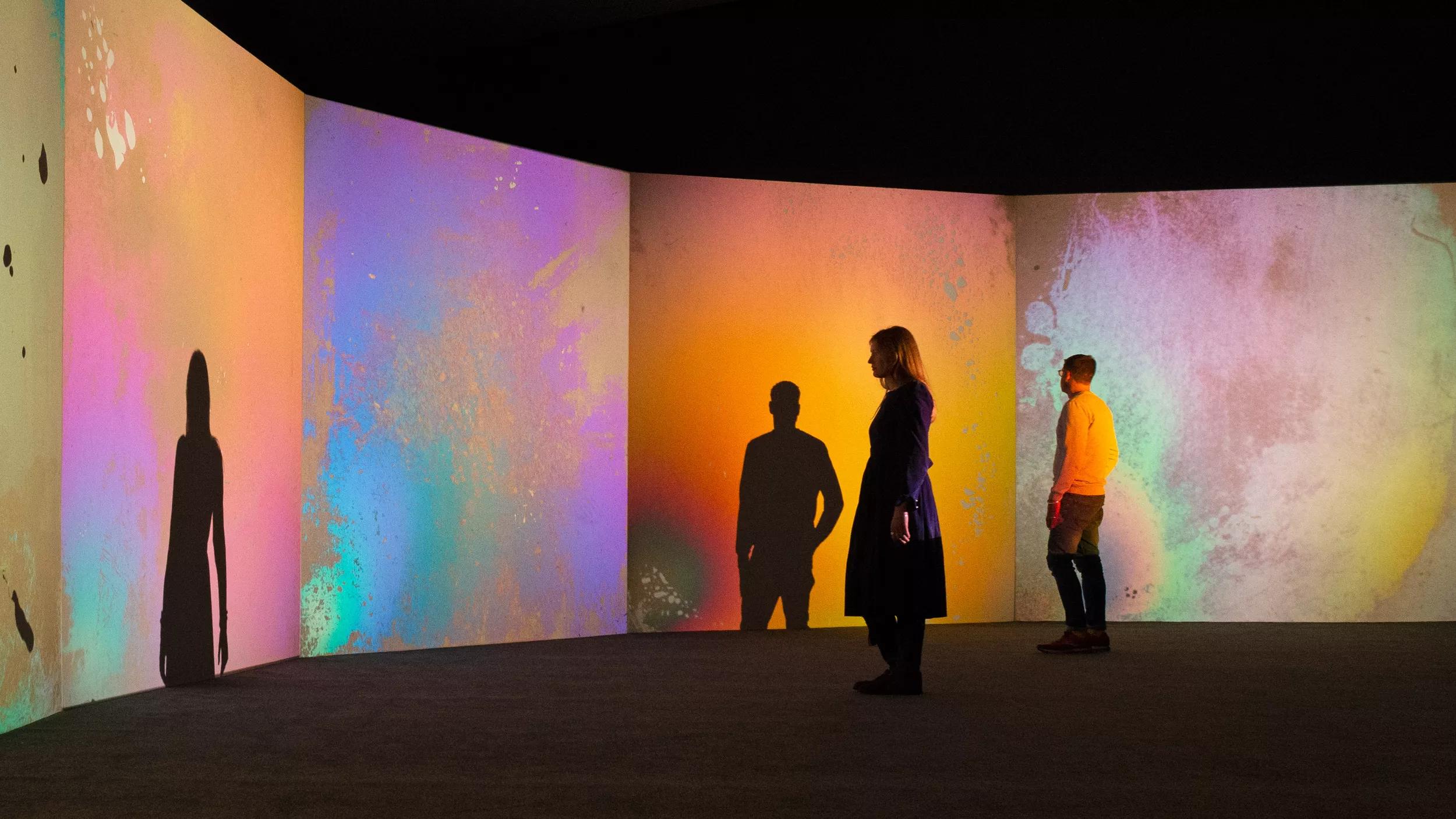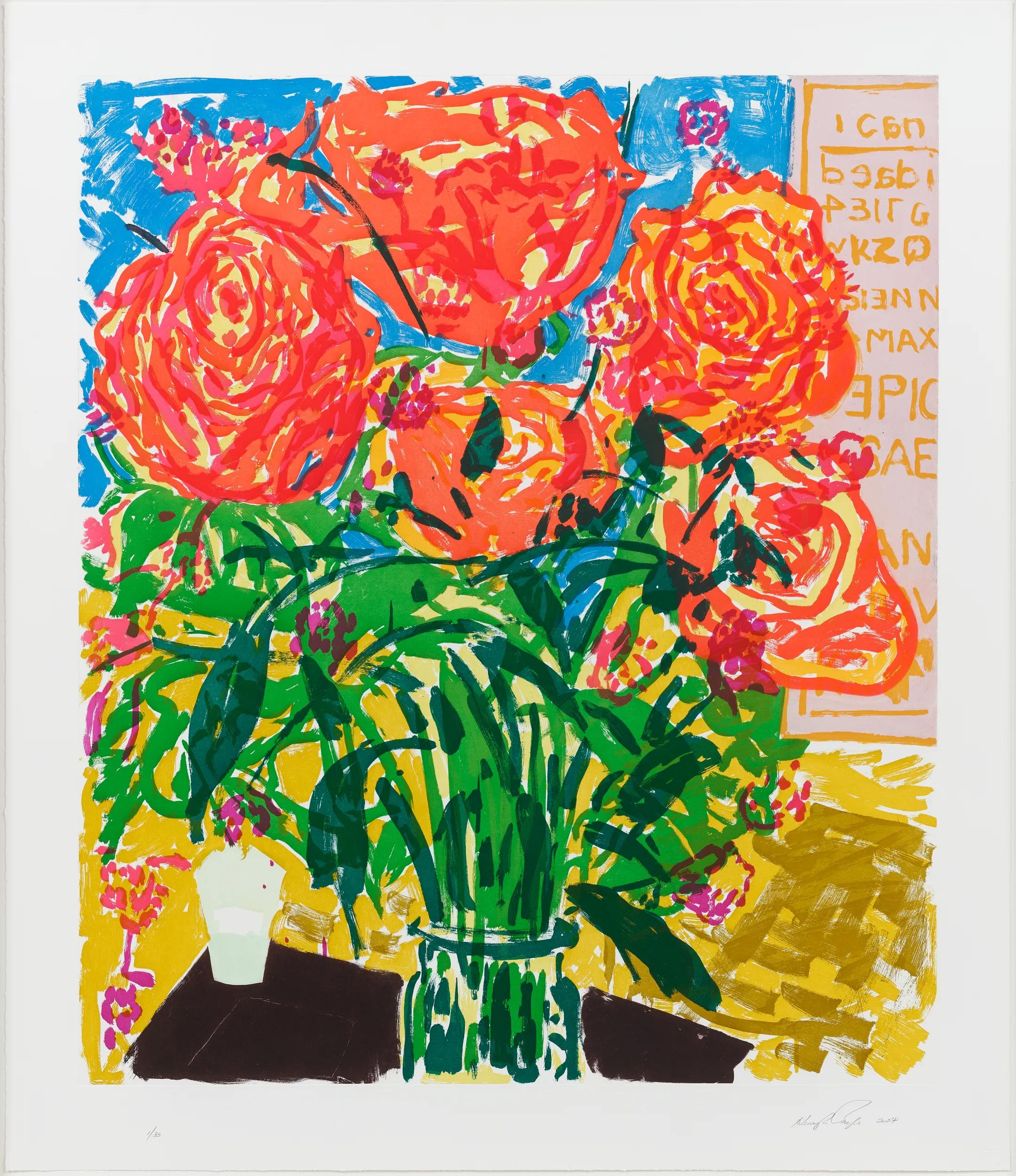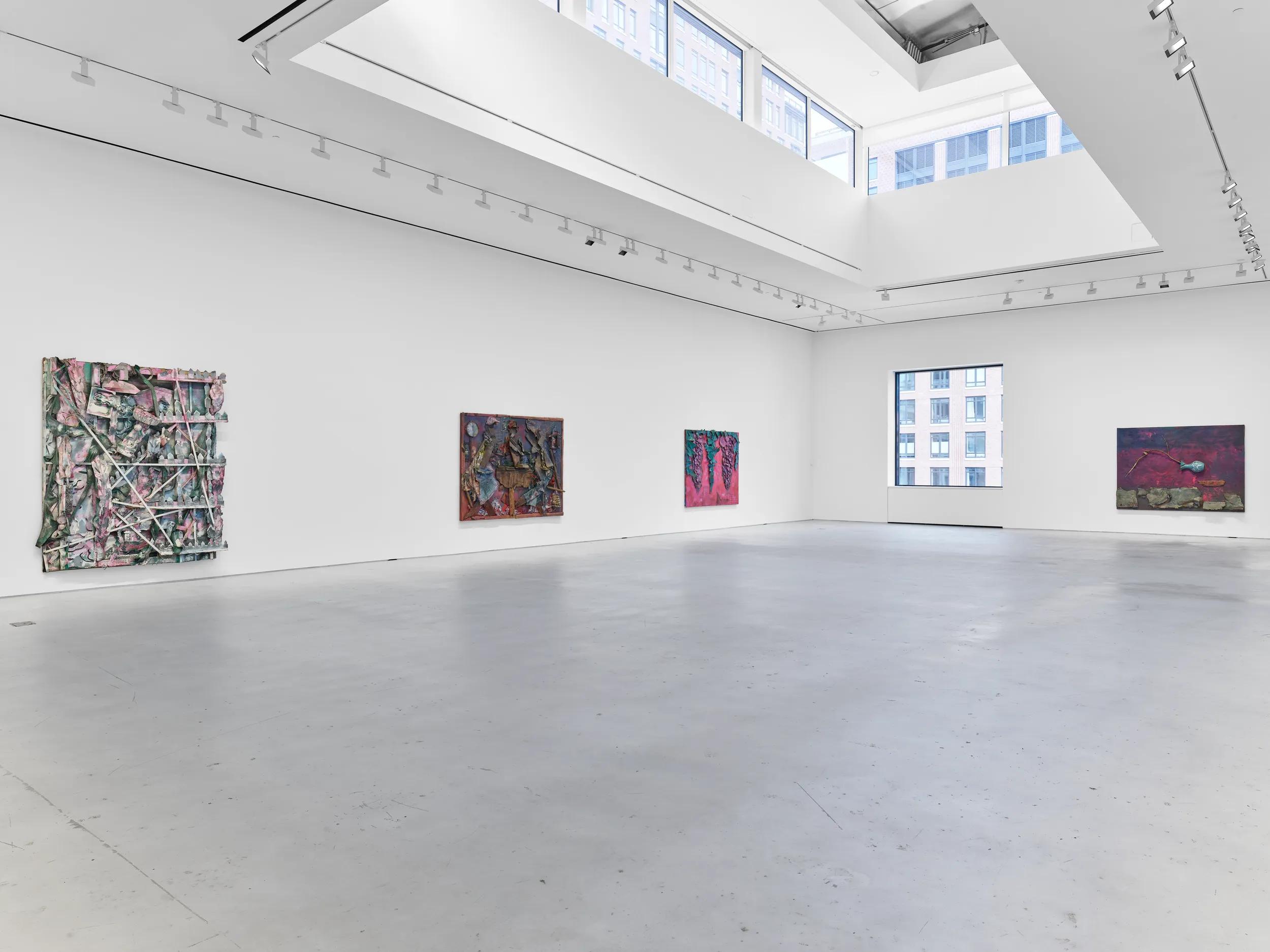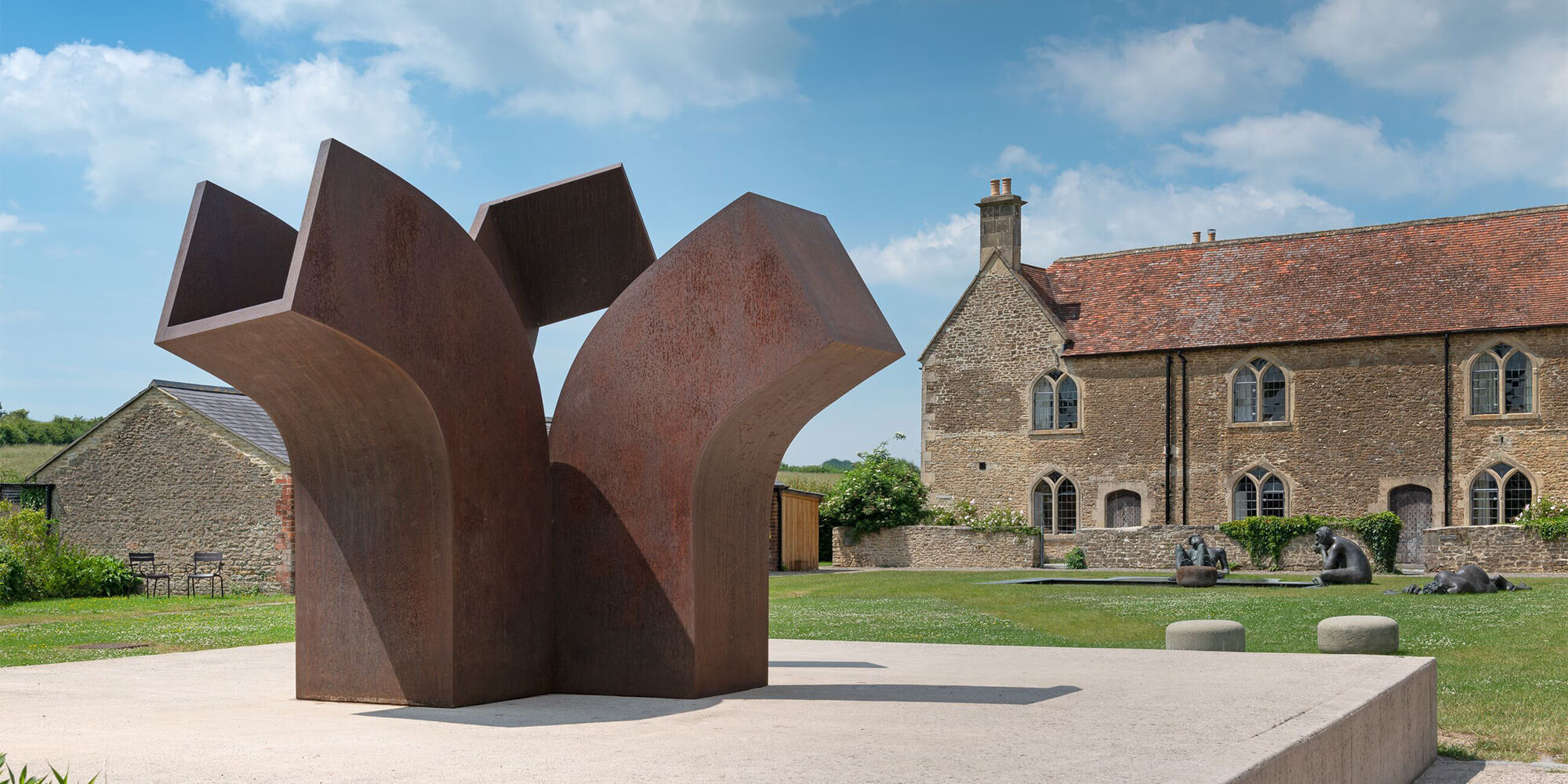
Eduardo Chillida
26 June 2021 – 3 January 2022
Somerset
One of the foremost Spanish sculptors of the twentieth century, Eduardo Chillida is widely celebrated for his monumental sculptures and enduring fascination with interconnected shape, space and organic form.
Explore the exhibition
Mikel Chillida, the artist's grandson, leads us through the Threshing Barn, Pigsty and Workshop galleries, where we encounter seminal works in plaster, wood, steel, iron, granite, Chamotte clay and paper, dating from 1948 to 2000. Demonstrating the breadth of Eduardo Chillida’s (1924 – 2002) artistic materials, the exhibition highlights his ongoing relationship to architecture and spirituality, figure and space, music and philosophy. The Threshing Barn features one of the earliest plaster works made by Chillida, ‘Yacente (Recumbent)’ (1949) and a further work, ‘Forma (Form)’ (1948) in bronze.
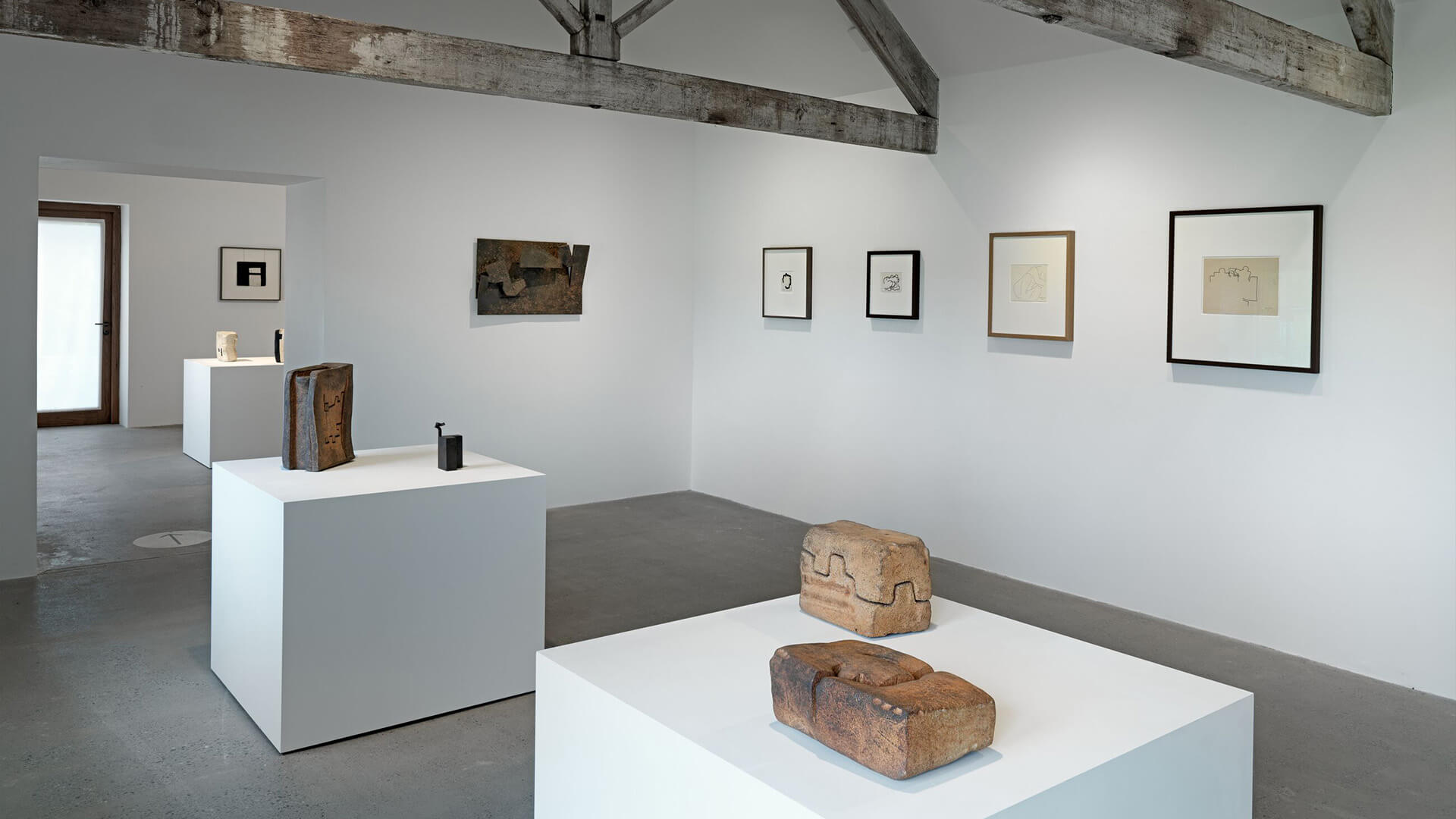
Having trained as an architect in the early 1940s, Chillida’s astute awareness of scale and interconnected structures is prevalent across monolithic public sculptures and more delicate, small-format pieces. ‘Proyecto para un Monumento (Project for a Monument)’ (1969) is a key work made up of three elements that fit together, each of its facades represent the symbol of the cross, with a fixed central element and mobile sides. While grounded in its structure and material, the sculpture also engages with the spiritual and philosophical, following Chillida’s meeting with German philosopher Martin Heidegger and their discussions of the implications of space and place.
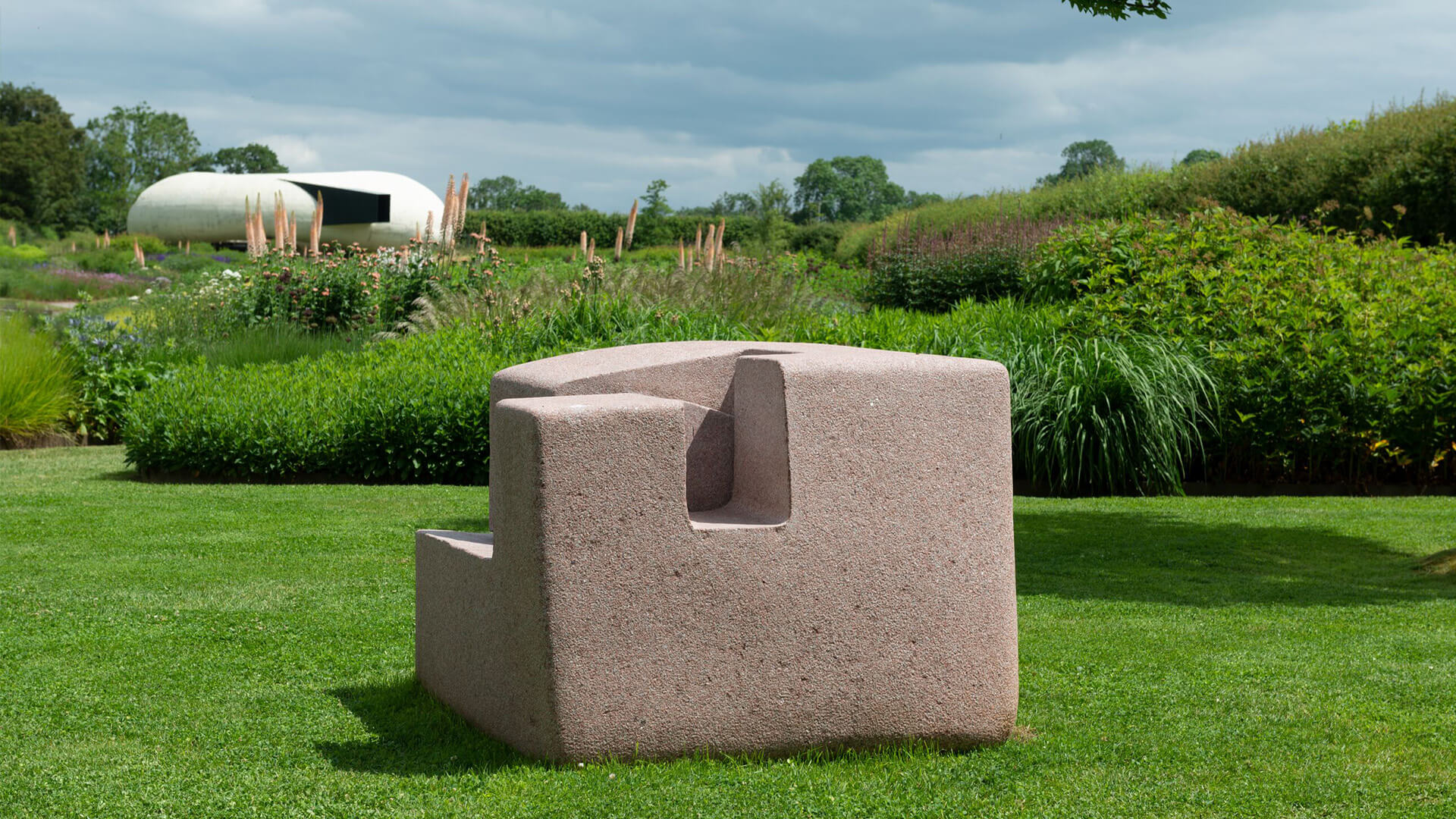
Much of Chillida’s practice is marked by a rebellion against gravity, with works appearing as though they are floating or suspended in space. In making the outdoor sculpture, ‘Harri VI (Stone VI)’ (1996), Chillida rounded off and perforated the edges of the solid granite block to produce an effect of lightness from a material of great density, mass and weight. Chillida frequently stated that matter moved downward, the spirit moved upward. This thought process can be seen continued in his ‘Gravitación (Gravitation)’ series, manipulating sewn paper and thread to allow an openness for air to circulate between layers, a weightlessness that alleviates the tension between soul and body.
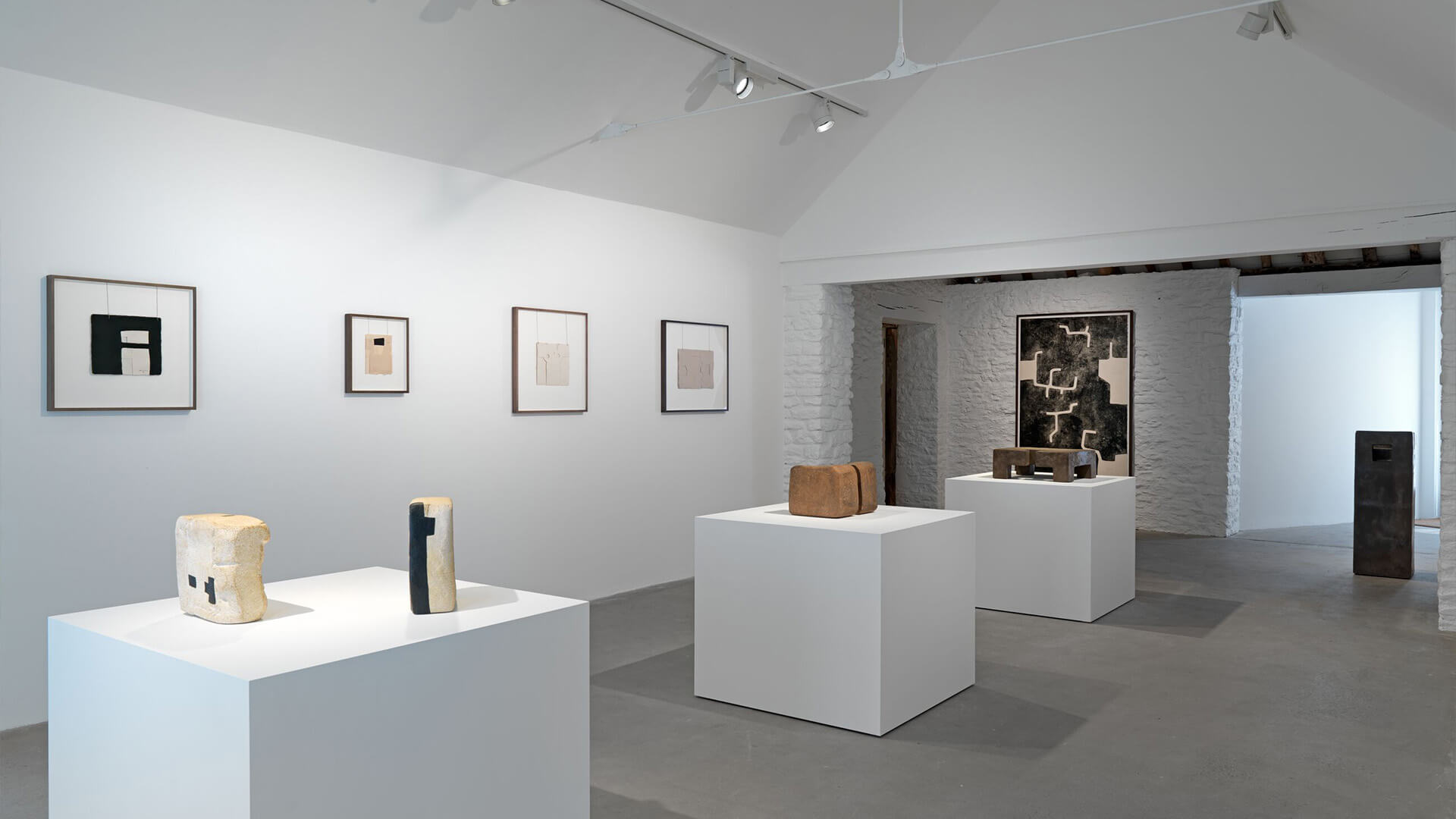
At several moments in Chillida’s life, his passion and awe of natural phenomena, and his need for direct contact with the elements, are front and centre. From the 1970s he began to heavily incorporate clay into his creative process, making direct reference to the earth and primitive materials around him. Two types of work emerged from the artist’s direct manipulation of Chamotte clay: the Lurrak (meaning earth in Basque) and the Óxidos (Oxides), as seen in ‘Lurra 4 (Earth 4)’ (1977) and ‘Oxido G-251 (Earth – Oxide G-251)’ (1992). Their materiality and use of natural codes resulted in organic sculptures of poetic shapes that effortlessly create their own rhythms.
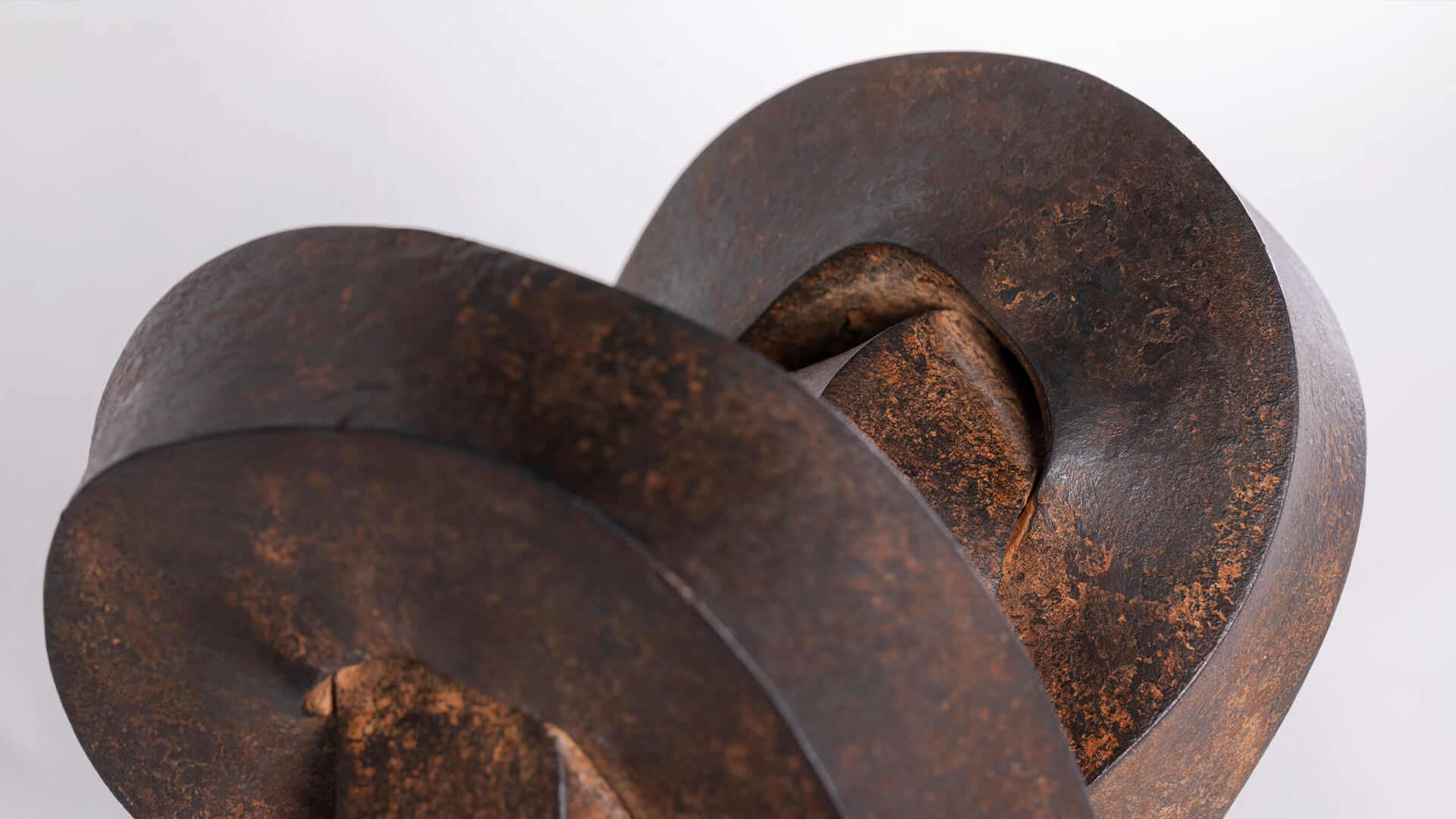
‘Lotura VIII (Knot VIII)’ (1991) continues this tradition, a work at the peak of Chillida’s artistic maturity that opens up vibrantly into space, configuring, wrapping and quietly inhabiting it. Rejecting molds or molten metal, Chillida focused on mastering his material in the forge - making two longitudinal cuts in a single block of metal and manipulating the arms that emerge into an embrace. The work on view in Somerset is part of a long series of more than 30 sculptures, created between 1991 and 2000, of which the monumental ‘Lotura XXXII (Knot XXXII)’ currently stands at Chillida Leku.
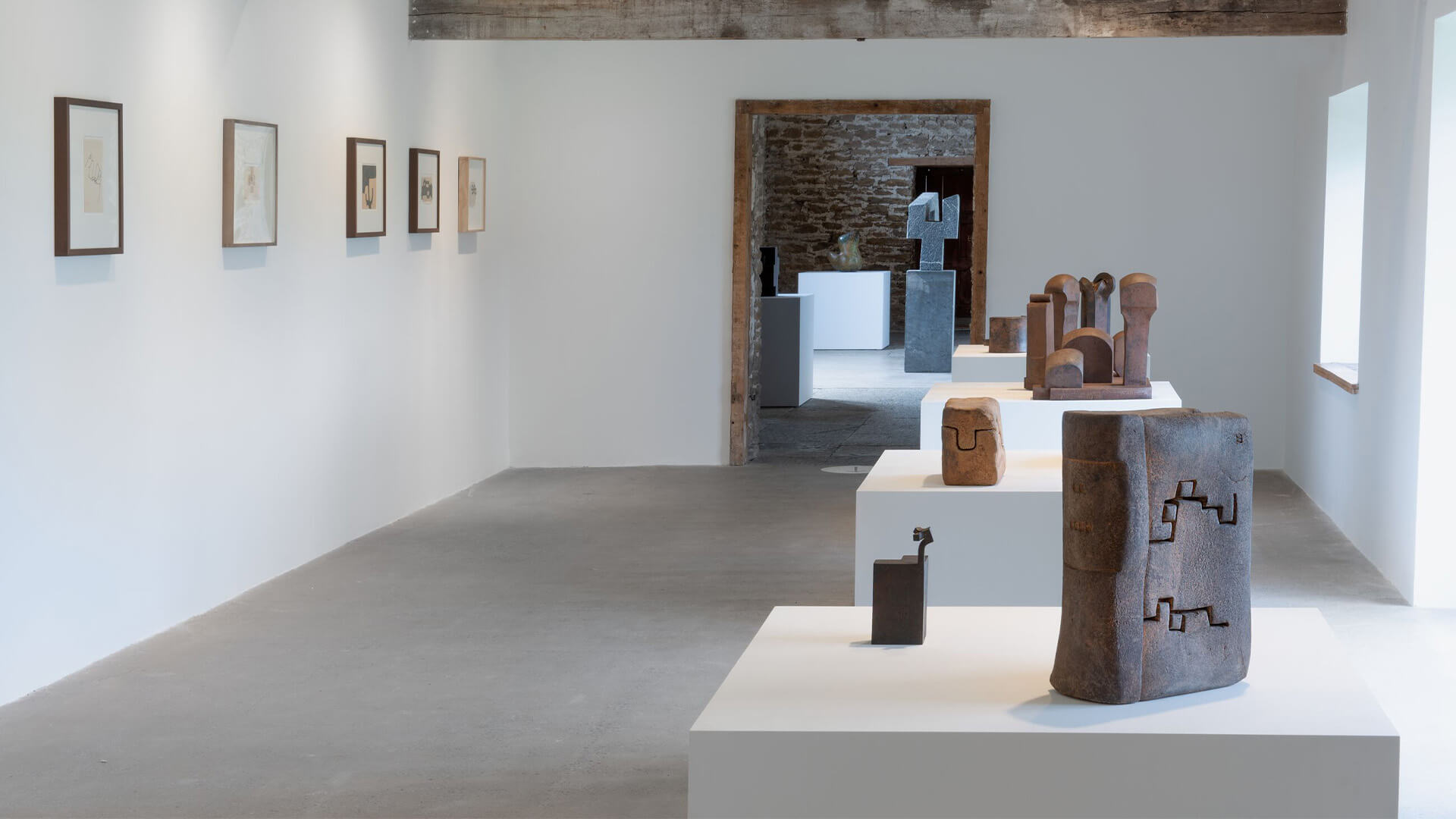
During his career, Chillida created works in homage to figures he respected and admired, including artists, musicians, philosophers, scientists and poets. A tribute, ‘Lurra M-35, Homenaje a Bach (Earth M-35 Homage to Bach)’ (1996) is one of many sculptures dedicated to the famous German composer J S Bach, alongside Antonio Vivaldi. For Chillida, musical components such as silence, rhythm and time enabled him to reflect on ideas and parameters within his own work.
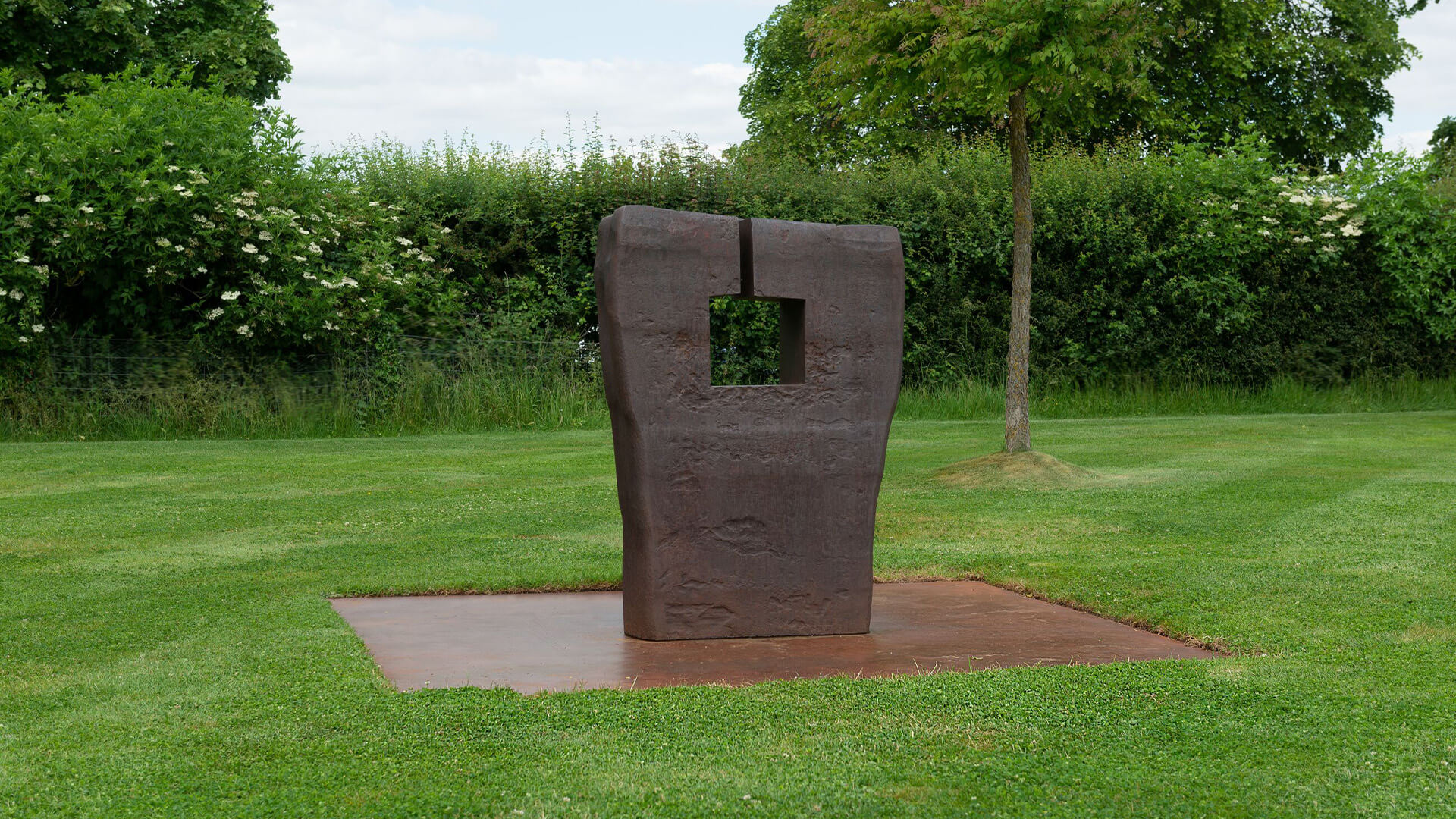
Made in the last decade of the artist’s life, ‘Elogio del Cubo, Homenaje a Juan de Herrera (In Praise of the Cube, Homage to Juan de Herrera)’ (1990) expresses Chillida’s admiration for the sixteenth century Spanish architect Juan de Herrera. The outdoor work conveys a sense of eternal presence and enduring cogency of the cube, created during a milestone year for Chillida in which it was first presented at the Hayward Gallery, London.
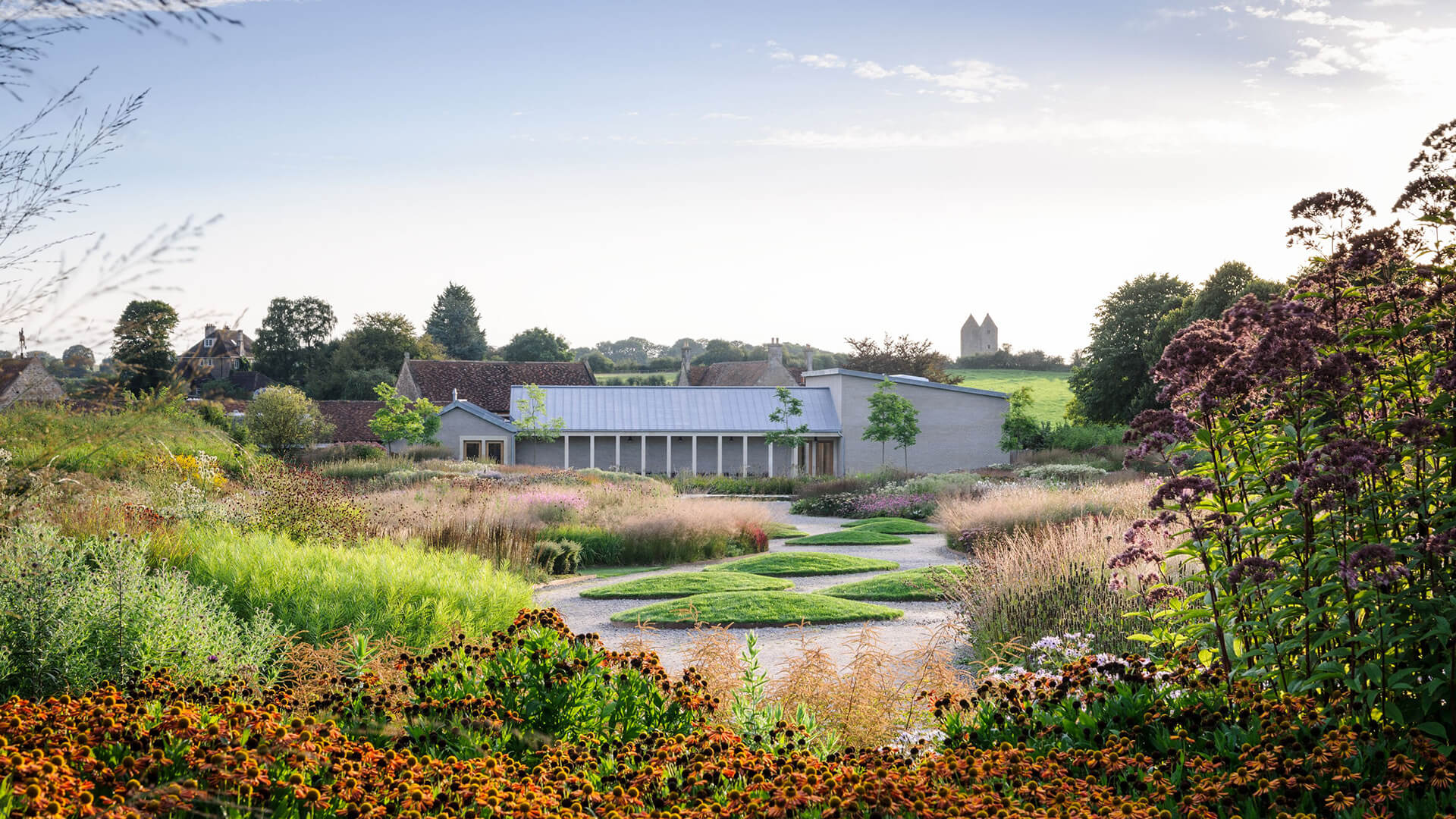
On view in Somerset
The gallery is open to the Tuesday to Saturday, 10 am to 6 pm. In order to share a safe and positive experience, we ask that you read our Visitor Guide and book a timed reservation here.
About the Artist

Eduardo Chillida
Inquire about available works by Eduardo Chillida
Chillida is the recipient of numerous awards, including the Grand International Sculpture Prize at the Venice Biennale in 1958; the Carnegie Prize for Sculpture in 1964; the Andrew Mellon Prize in 1978; and the Jack Goldhill Award from the Royal Academy of Arts in London in 1996. In 2000, the Chillida-Leku Museum, a monographic exhibition space devoted to the artist, opened in San Sebastián, Spain. Chillida died in San Sebastián on August 19, 2002.
Chillida’s public sculptures are prominently displayed internationally, including Spain, Germany, France and the US. Recent solo museum exhibitions of Chillida’s work include: ‘Memory, Mind, Matter: The Sculpture of Eduardo Chillida’, Meadows Museum, Dallas, Texas, US (2018); ‘Chillida’, Museo de Arte e Historia de Durango, Durango, Spain (2018), ‘Art and Space’, Guggenheim Museum Bilbao, Spain, (2018); ‘Eduardo Chillida, Gravitación’, Musée des Abattoirs, Toulouse, France (2018). ‘Eduardo Chillida’, Wiesbaden Museum, Wiesbaden, Germany (2018) and ‘Chillida in the Rijksmuseum Gardens’, The Rijksmuseum, Amsterdam (2018).
–
‘Eduardo Chillida’ is on view now through 3 January 2022 at Hauser & Wirth Somerset.
Current Exhibitions
1 / 9
